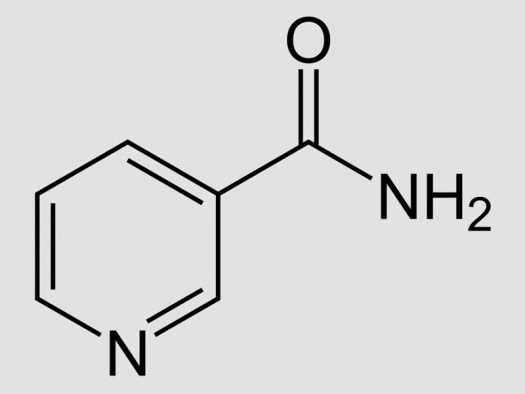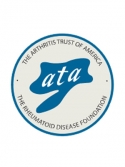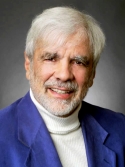Niacinamide.jpg

Illustration by NEUROtiker, Wikimedia Commons / Public domain
Exclusive interview of William Kaufman, Ph.D., M.D. by Jonathan Wright, M.D. Nutrition & Healing, August 1997, p.5-6.
Dr. Wright: Welcome Dr. Kaufman. During my years at the University of Michigan Medical School, 1965-1969, we heard scarcely a word about nutrition, vitamins, and disease treatment. And even though you were a 1938 graduate of that same medical school, we heard nothing about your landmark work on niacinamide and arthritis. Any speculations about that?
Dr. Kaufman: In my medical school years, we were drilled in great detail about vitamin-deficiency disorders during our lectures in internal medicine, pediatrics, public health, neurology, psychiatry, and pathology. But after synthetic vitamins became available to treat florid deficiency diseases, not teaching about nutrition and vitamins became a national trend.
I’m not surprised they didn’t refer to my books. The reviews of my 1943 book were dismissive, because the “experts” couldn’t believe that the larger amounts of niacinamide I used in therapy improved joint mobility, muscle strength, maximal muscle-working capacity, and mental functioning.
Dr. Wright: Your two books concerning niacinamide treatment contain absolutely amazing detail about clinical signs and symptoms of the syndrome you called “aniacinamidosis.” How did you gather all of this information?
Dr. Kaufman: Throughout my twenty-five years of private clinical practice, I always took two to three hours minimum with each new patient, and at least an hour and sometimes two hours on subsequent visits, according to the needs of the patient. Remember, I was always extremely interested in psychosomatic medicine, too, and taking this time was extremely helpful in getting basic information that could ease psychosomatic difficulty as well as physical problems.
Dr. Wright: Not Many doctors spend that amount of time with each patient, especially with today’s so-called managed care, HMOs, and all that. You’ve mentioned your direct observations of patients taking niacinimide....
Dr. Kaufman: Yes, as I said, any patient I gave niacinamide had to sit in my office for at least an hour, so I could observe what happened. My first observations were made in the days before bread and other white-flour products were “enriched”...
A misnomer of the first order....
...“enriched” with niacin, which eventually turned into niacinamide, but the “enrichment” used only a few B-vitamins, and not B or folic acid or chromium or many of the other things milled out of flour. So I really got a chance to observe the difference that niacinamide could make, starting from a position of real deficiency or semi-deficiency.
Dr. Wright: Tell us about that.
Dr. Kaufman: There are many more details in my 1943 book, but let’s cover a few. Within 2-1/2 to five minutes after taking the first 100 milligrams of niacinamide there was a degree of physical and mental relaxation which became marked in the next twenty minutes. The first objective change, apparent within the first five minutes, is the relaxation of previously tense muscles, and the replacement of a drawn facial expression by a more calm one, or even a smile. Without suggestion, patients began to sit, walk, and stand more erectly. Within the first five to ten minutes, the color of the hands and feet might change from a sallow yellow to a healthy pinkish or ruddy color, and the hands and feet frequently are subjectively and objectively warmer. There are many more changes detailed in that book.
Dr. Wright: What got you started studying niacinamide?
Dr. Kaufman: Actually I started with niacin. I had read an article in the AMA Journal which said that niacin was safe, so I took some and got very sick. After that I decided to concentrate on niacinamide, and looked around without success for a local supply. I couldn’t find any at first, but ultimately I was shipped two boxes containing 100,000 tablets of niacinamide, 50 milligrams each, so I had plenty of material.
Dr. Wright: Your second book, published In 1949, contains carefully made clinical observations of 455 people treated with niacinamide over several years each, especially focusing on their joint disease.
Dr. Kaufman: I had noticed early on that joints were one of the most frequently improved areas among patients with aniacinamidosis. When compulsory “enrichment” of flour occurred in 1943, many of the more obvious symptoms of aniacinamidosis disappeared from the general population, but the same joint problems persisted. So in 1944, looking for objective data, I started precise measurement of the ranges of joint motion of every patient who had obvious arthritis, at the time of their first examination.
Dr. Wright: You designed your own instrument....
Dr. Kaufman: They’re completely described in my 1949 book. In 1945, I designed an abbreviated but objective measurement of twenty joints or joint groups that could be observed and recorded in five minutes on a special form. I performed this measurement on all new patients instead of just those with obvious arthritis, and it quickly became apparent that limitation of joint movement was exceedingly apparent in many individuals without joint complaints or clinically obvious arthritis. From there, I went on to design a “Joint Range Index” from a weighted numerical average of these twenty measurements.
Dr. Wright: Your 1949 book reports the very significant improvement in the Joint Range Index that could be achieved both in individuals with osteoarthritis and in those with rheumatoid arthritis....
Dr. Kaufman: As well as the regression that occurs when individuals stop their niacinamide therapy. As long as niacinamide is continued, the improvement “holds,” but it can’t be stopped without ultimate regression. Of course, joint mobility wasn’t the only improvement, just the one we could precisely measure. Nearly everyone got at least some pain relief and reduction of swelling. It takes one to three months for maximum effect, but nearly everyone needed less pain medication, and a significant number needed none.
Dr. Wright: I’ve followed your lead in niacinamide therapy for 21 years, and have observed it to work just as you’ve said. Some joints respond better than others....
Dr. Kaufman: Yes, although they all respond to a degree. The best are knees, shoulders, and the neck ...and then wrists and fingers.
Dr. Wright: How does niacinamide work in helping joints?
Dr. Kaufman: Niacinamide has the special capacity of “wringing out” excess fluid from cartilage and connective tissue. Niacinamide is also anti-inflammatory, as demonstrated by reductions in the sedimentation index for patients with rheumatoid arthritis.
Dr. Wright: What dosages of niacinamide do you recommend?
Dr. Kaufman: After I completed the study reported in the 1949 book, I found that larger amounts were actually more helpful. But timing is just as important: 250 milligrams of niacinamide taken every three hours for six doses is about twice as effective as 500 milligrams taken three times daily. You actually did us a service, Dr. Wright, when you persuaded Winner Chemists in New York City to manufacture an effective time-release niacinamide.
Dr. Wright: There is so much to learn in your books, and we’re almost out of space ...you write about “delayed post-traumatic articular syndrome,” and its treatment with niacinamide. The depth and breadth of detail about clinical uses of niacinamide you provide is remarkable! But you also were a practitioner of “whole patient” medicine decades before it became popular — you write about psychogenic and allergic causes of joint problems and many other symptoms. Are your books still available?
[Dr. William Kaufman replies, but, unfortunately, his books are now collector’s items: Ed]
Dr. Wright: You may have none left once this is published! Thank you, Dr. Kaufman, for sharing with the reader of Nutrition & Healing a very small portion of your knowledge of the clinical uses of niacinamide.
About Dr. Kaufman
William Kaufman earned his B.A. from the University of Pennsylvania in 1931, his Ph.D. in physiology and his M.D. from the University of Michigan graduate and medical schools in 1937 and 1938. Following internship and residency, he served as Clinical Assistant in Medicine at the Yale University School of Medicine.
From 1952 through 1969, Dr. Kaufman was variously Contributing Editor and American Editor-in-Chief of the International Archives of Allergy and Applied Immunology. He was in the private practice of internal medicine from 1940 to 1965 in Bridgeport, Connecticut, where he conducted and published the research on niacinamide and arthritis discussed in this interview.
Dr. Kaufman is a Fellow of the American College of Physicians, the American Association for the Advancement of Science, the American College of Nutrition, the Gerontological Society of America, the Royal Society of Medicine, and an Emeritus Fellow of the American College of Allergy and Immunology. He was cofounder, in 1950, of the Academy of Psychosomatic Medicine.
Dr. Kaufman is the author or co-author of more than 60 professional papers, and of the books The Common Form of Niacin Amide Deficiency Disease, Aniacinamidosis, Bridgeport, Connecticut, 1943, printed by The Printing Office of Yale University Press, and The Common Form of Joint Dysfunction: Its Incidence and Treatment, E.L. Hildreth and Company, Brattleboro, Vermont, 1949. He is also a playwright, artist, and poet.
Dr. Kaufman’s complete bibliography is posted at DoctorYourself.com: William H. Kaufman, M.D., Ph.D.



